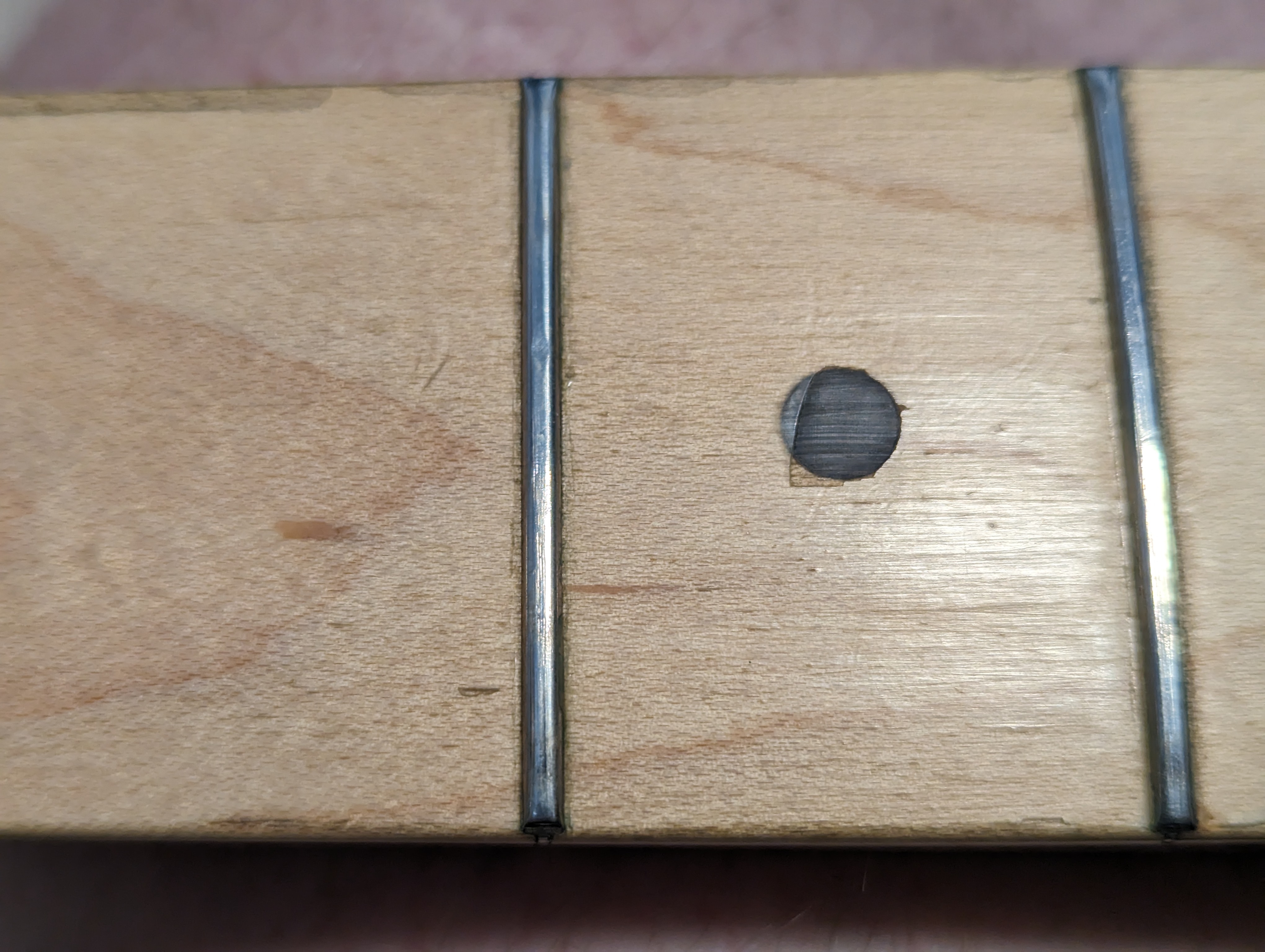Can you put a circle around the damage?
guitars
Welcome to /c/guitars! Let's show off our new guitar pics, ask questions about playing, theory, luthier-ship, and more!
Please bring all positive vibes to the community and leave the toxic stuff elsewhere.
Rules:
-
Treat others with respect. ALL others.
-
No spam
-
No self promotion
-
No NSFW
-
No circle jerk posts, there are other places for that silliness, and they are wonderful. Not here.
Playing guitar for 20 years. Shred all the time. Can’t see a thing wrong?
It looks like there was a clear coat over the inlay that is chipping off, it's a little hard to tell in the photo. Maple fretboards are sometimes lacquered and you can buy it online by looking up guitar laquer. I would sand the spot with fine sandpaper until flat then add a very light coat of laquer over, probably thinned out a bit too. After it dries sand with very fine paper and a little water. Keep repeating those steps until it is as flat and smooth as you want.
I'm not sure exactly what in the photo is the wear is you're referring to. I'd say if it plays fine you're fine.
Maple fretboards are finished and if you play them it tends to wear through. Maple fretboards that have been played a lot tend to have very obvious grayish finger marks. Call it a badge of honor and keep playing. Rosewood doesn't have this problem, but I've always felt that a guitar that has been played a bunch is cooler that one in pristine condition.
Others have commented on fixing the inlay, but I noticed there's also some dings and divots in the frets themselves. In case that's what you're referring to, those are also entirely fixable. Divots like those can cause buzzing or dead frets. If that's not happening to you, then no need to bother fixing them.
To fix that, you would need to run a sharpie over the top of the fret then file it until most of the sharpie is gone. Repeat until the divot is no longer there. Next, you sharpie it one more time, but this time you're crowning the fret so the top is round instead of flat. There's tons of YouTube videos that show the technique for doing this. It can be a little tricky. Then you'd polish it up so it's nice and smooth.
If the dents are deep enough, you might need to replace the fret completely which is also entirely doable, but will require some more tools to cut the fret ends and pull the original fret out.
I feel it's worth clarifying that you cannot file one fret like this. You will need to lower all the frets in unison hence the sharpie. I figure you probably meant that I just wanted to clarify before somebody files down a single fret and wonders why they can't produce the correct note in that position anymore.
Guitars which have worn naturally over the time have more mojo than case queens. If it isn’t interfering with your playing I’d say let it ride.
Case Queens, I love it
Nail varnish and some Wet and dry sand paper. Although personally I'd leave it.
Based on the inlay and the sides of the fretboard I'm assuming you're referring to the finish. Unlike rosewood (or similar) boards, most maple boards have a thin finish that absolutely wears through over time. Generally the only way to fix this is to refinish the neck and, due to the nature of a finished fretboard, usually this entails a re-fret.
To my knowledge, the only way to prevent this from happening is to not play it. It's just a natural by-product of playing a finished board.
In the long term, More of the finish will wear off. Eventually you'll even get some dark spots. It's a look.
Overall this is nothing I would be concerned about and certainly not justification for a refin. However, if you're the type of person that absolutely can't stand The look of an instrument that shows play wear (I understand), then I would strongly suggest you consider avoiding maple fretboards in the future as you're going to be constantly fighting this battle assuming you actually play it.
People pay big money to fake this. Keep playing and enjoy.
